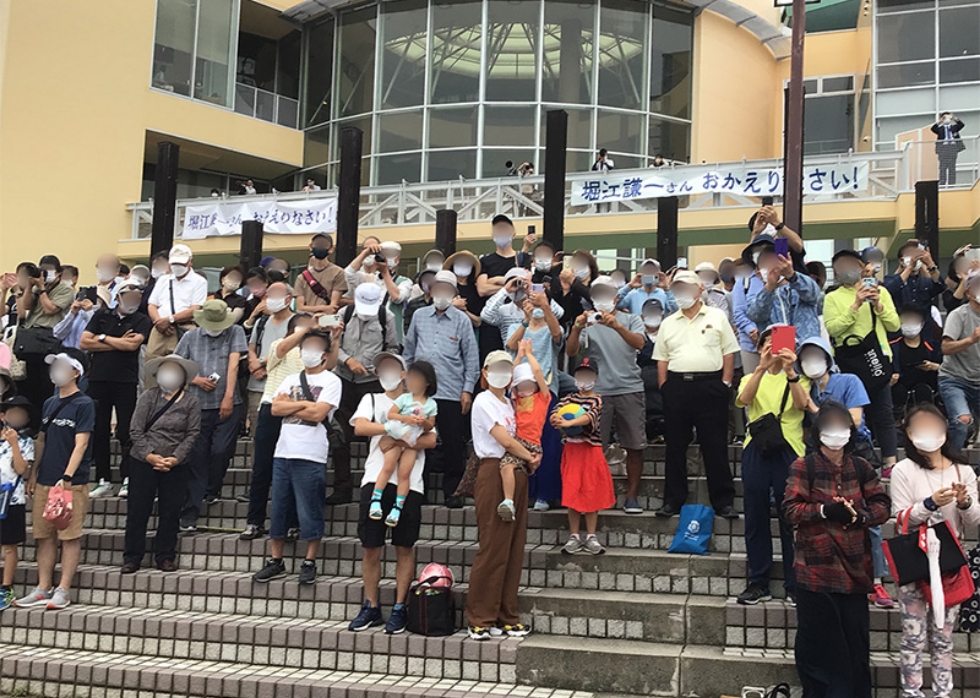Purpose Story 01
Transporting the
dreams and courage
of the world’s oldest ocean adventurer along with the hope of his supporters


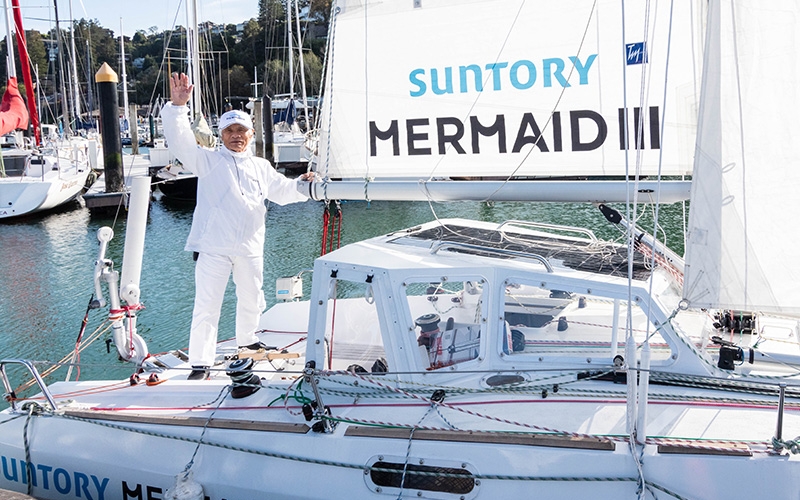
It all began with a letter sent addressed to Nissin President Masahiro Tsutsui. "I would like Nissin to transport a sailboat to San Francisco, which will take me across the Pacific Ocean alone and without stopping." The letter had come from Kenichi Horie, a famous Japanese ocean adventurer.
Nissin has connections with alumni of the Kansai University Saling Club, which Mr. Horie once belonged to, and we had supported Mr. Horie's adventures a total of six times since the 1980s. In addition, in 1988 Mr. Horie gave a lecture at Nissin to mark our 50th anniversary. President Tsutsui remembered it well and wanted to help no matter what.
With this in mind, we happily accepted Mr. Horie's request. The job entailed bringing together the knowledge of the Group, including my department, which excels at transporting large cargo, the International Section, which is skilled in shipping procedures, and Nissin International Transport U.S.A, which covers transport in the United States. With the containership scheduled to depart in March 2022, this meant we kicked off the project during the height of the logistics disruptions caused by the COVID-19 pandemic.
Mr. Horie's sailboat was designed for this type of adventure. It’s truly a one-of-a-kind vessel found nowhere else in the world. The fact that it is irreplaceable and used by a world-class adventurer, and that we were in the middle of the COVID-19 pandemic, I honestly thought the project would be difficult and full of responsibility. In fact, a number of unpredictable challenges would stand in our way.
The first was that we could not arrange a container bound for North America to carry the sailboat. Due to the pandemic, logistics around the world were disrupted, and it was difficult just to secure our normal container space. It also did not help that the sailboat could not fit in the normal container size, and we found it next to impossible to secure the space needed.
Moreover, there were problems at the Port of Los Angeles, where the ship carrying the sailboat would dock. Perhaps due to the logistics disruptions, there were a large number of ships forced to wait offshore at that time, and it was impossible to know when this backlog would be cleared.
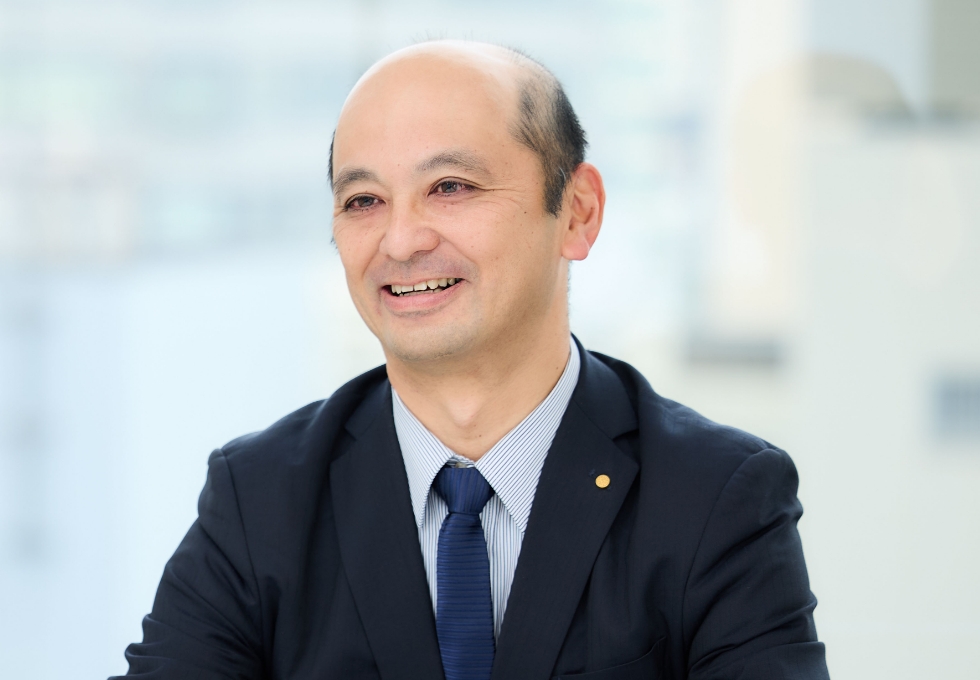
Profile
Takeshi Aoki
Osaka Sales Department No.2, Section No. 1
Takeshi Aoki joined Nissin in 1999. After working for the Sales Development Department of Kobe Branch, Sales Section No. 4 of Osaka Sales Department No. 2, and Warehouse Section No. 1 of Kobe Branch, Aoki was assigned to his current role at Sales Section No. 1 of Osaka Sales Department No. 2 in April 2017.
Aoki engages in the multimodal transport and installation of large machinery and facilities covering China, Southeast Asia, and North America.
He also oversees exports of used construction machinery and imports of furniture and sundries.
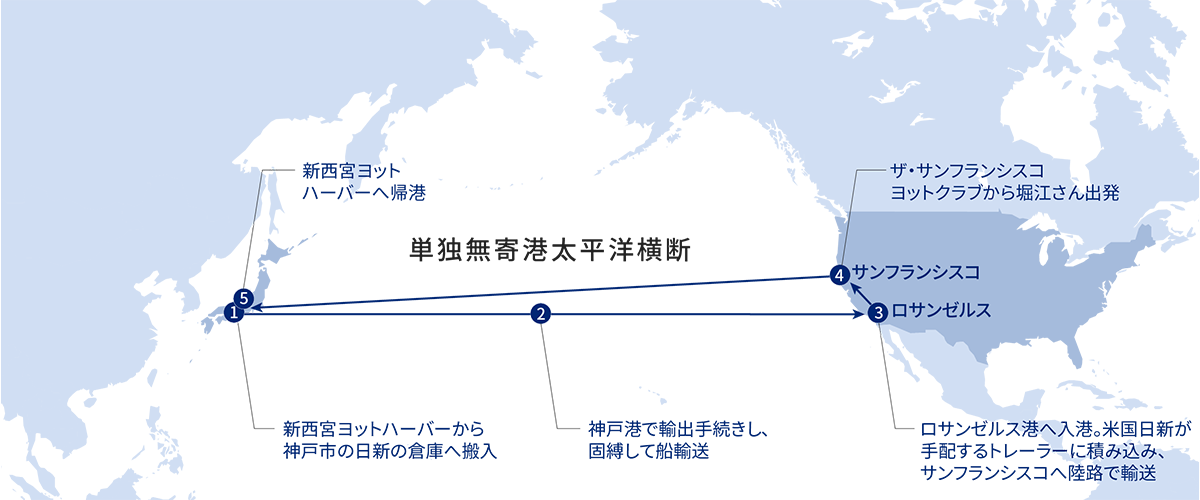
Given the situation, I asked Mr. Horie about rescheduling. Mr. Horie, however, was adamant about keeping his timeline.
Pushing back departure would increase the risk of running into storms after leaving San Francisco. Mr. Horie told us bluntly, “I’ve got to set sail no later than the end of March. The adventure has already begun!”
I had met Mr. Horie several times before and he was very friendly and cooperative. However, this time around was different—he was dialed in. As an adventurer, he had already prepared the itinerary, and was ready to go both emotionally and physically. Seeing this, I wanted to do everything in our power to make his journey possible. I knew what had to be done.
We decided to focus first on the container space issue. While it took time and negotiations, in the end, we found a shipping company willing to lend their full support and barely managed to secure the space. Our International Section had been doing business with them for many years, and this relationship of trust paid off. Afterwards, we managed to overcome the problem of ships being forced to wait offshore to unload their cargo, as the containership we used entered the Port of Los Angeles without significant delay. We had overcome two huge challenges.
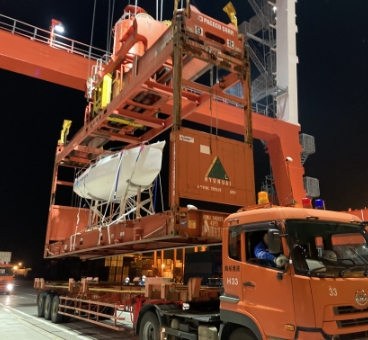
However, we also faced several others. For example, one was securing the sailboat onboard a containership. The sailboat is made of reinforced plastic. If it were damaged during transport, Mr. Horie’s adventure would have been ruined. We decided to fasten the sailboat in a make-shift container. In that respect, we had the basic know-how because we often secure and transport large machinery in a similar fashion. This time, though, there was some things that we were unsure of because it is a one-of-a-kind sailboat. I met directly with the sailboat designer, who told me what to look for when lashing it down. We followed these recommendations accordingly.
However, the person at the shipping company who checked the cargo said that the sailboat’s binding was too loose. The sailboat designer had said it has to be loose, while the shipping company said it has to be tight. I had never experienced this before. After that, we managed to complete the lashing work by fine turning the ties based on the requests of both parties. As a result, the sailboat, which had to be protected at all costs, was safely transported to the United States.
The greatest challenge, though, lay ahead—getting the sailboat to The San Francisco Yacht Club, Mr. Horie’s port of departure.
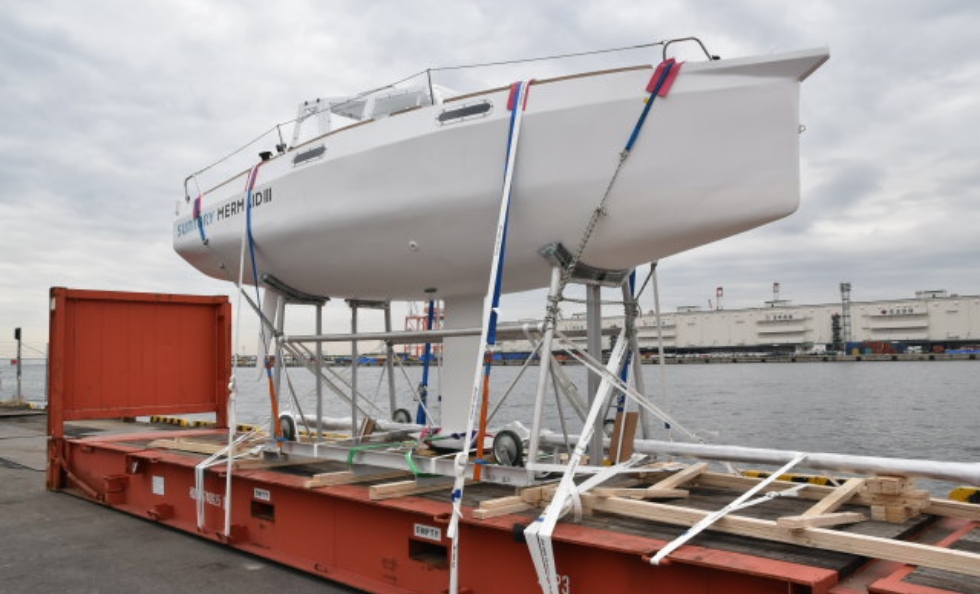
As I mentioned earlier, there was also the problem of ships having to wait offshore before unloading their cargo. This is why we planned to load the sailboat onto a trailer from the Port of Los Angeles and transport it to the yacht club by land. After close coordination with Nissin U.S.A., the plan went smoothly, and the sailboat was loaded onto the trailer without issue.
However, the situation took a sudden turn. To my surprise, the yacht club said that the sailboat could only enter the marina by sea. The yacht club is prestigious with high-net-worth members and has strict local rules. They also do not have the resources to unload a sailboat from land. Mistakenly, the club’s rules and this situation had not been conveyed to us.
This same yacht club is where Mr. Horie arrived in 1962 when he completed his first solo non-stop Pacific Ocean crossing. Therefore, it was very meaningful for Mr. Horie to depart from there this time and return to Japan. Yet, we could not find a marina nearby to unload the sailboat. To be honest, we felt hopeless.
Just then, a "miraculous wind" blows.
When we got the word out about the issues with delivery, we received multiple pieces of information. Among them, a Japanese national who lives in the area and who is a sailing friend and supporter of Mr. Horie told us about a marina with the required facilities. From there, we could launch the sailboat and sail it to The San Francisco Yacht Club. Mr. Horie is a kind of a legend among sailors. This was the moment where the full impact hit home; in other words, this adventure would carry the thoughts and hopes of many sailors, not just Mr. Horie.
After departing from San Francisco on March 26, Mr. Horie continued his voyage smoothly and was expected to return to Japan in early June.
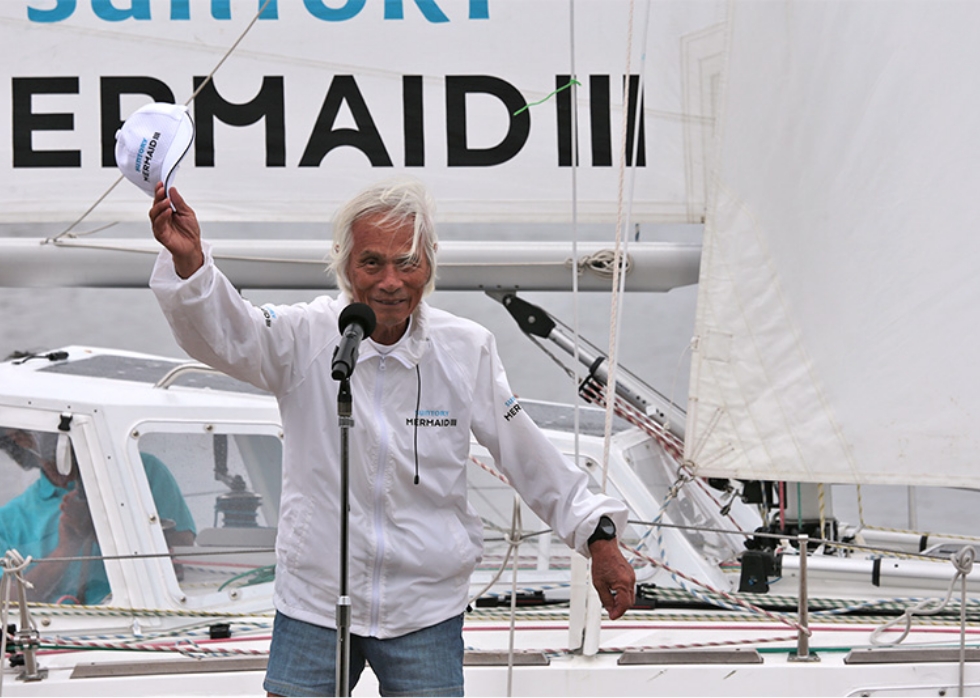
On June 4, Mr. Horie's sailboat finally appeared off Japan, having been transported as cargo on the outward journey and sailed on the return journey. At Shinnishinomiya Yacht Harbor, a crowd of around 1,000 spectators had come to cheer on Mr. Horie, and almost all major TV stations in Japan were covering the event.
Seeing this firsthand, I was reminded that Mr. Horie had accomplished a tremendous challenge that inspired the dreams and hopes of many, despite the sense of isolation that persisted during the COVID-19 pandemic. For me, I felt an indescribable sense of accomplishment and relief because of the challenges we had overcome. At the same time, I was proud and inspired that I was able to help this project as a logistics worker.
After his voyage ended, Mr. Horie expressed his gratitude to Nissin, saying, "I'm glad I trusted Nissin.” Afterwards, we received compliments from a number of customers who said that they had heard Nissin transported Mr. Horie's sailboat.
There are many not so straightforward challenges lurking behind the scenes of logistics. By tackling these with a sense of challenge and spirit of inquiry, we help bring dreams, excitement, and smiles to people. I look forward to this process as a way to realize our purpose.
